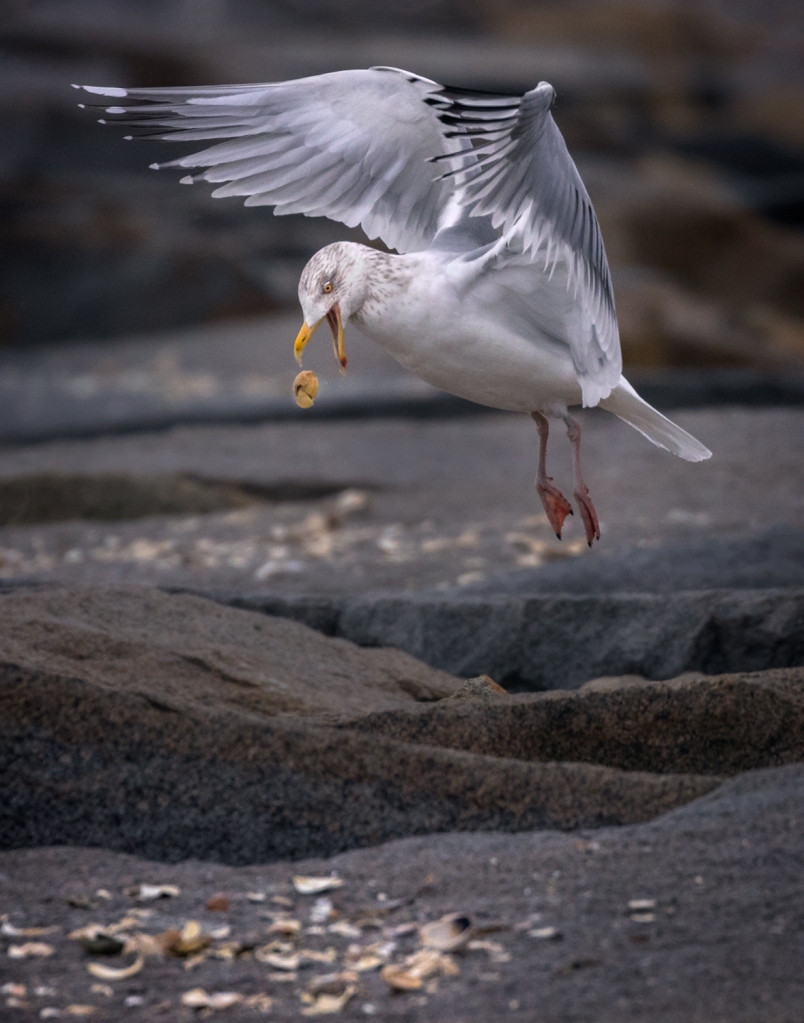This article along with others written by me can be found at EMS.
On the outermost reaches of Massachusetts, a narrow spit of land stretches out from the mainland into the cold blue waters of the Atlantic Ocean. It’s called Cape Cod, and while the entire region feels a world away from the bustling streets of Boston, the Outer Cape, forming the defiant “fist” of the flexed arm that is Cape Cod, is arguably the most wild and scenic section of the Cape. A popular vacation destination for seemingly as long as the idea of the Summer Vacation has existed, it can be difficult to feel the true essence and magic of the Cape while stuck in gridlock traffic on a muggy July day. The solution? Buck the trends and the masses by visiting the Outer Cape in winter, and discover the wild beauty of this special place in complete solitude. The rewards of a winter visit are many, and include:
- No crowds – even on the weekends, the beaches of the Outer Cape in winter are practically deserted, and finding the solitude required to peacefully reflect on the grandeur of the landscape is practically guaranteed.
- No bugs – mosquitoes, ticks and sand fleas can all be day-wreckers on a summer visit to the Cape, but aren’t typically a worry in the cold winter months.
- No fees or complicated beach passes – unlike the summer months, when many beaches on the Outer Cape require a parking pass and entrance fee, in the winter months parking is free to all and finding a spot is never an issue. The most up to date info on fees associated with Cape Cod National Seashore and town beaches can be found here and here, respectively.
- Dogs are allowed on beaches – in the winter, feel free to bring your furry companion along as you walk the beach, but keep them on a leash to prevent them from disturbing wildlife and the fragile dune grasses. The most up to date info and rules about dogs on beaches can be found here.
To get the most out of a winter visit to the Outer Cape, hiking the seemingly endless beaches and sand dunes is a must, and some excellent options include:

Dune Shacks Trail: This is the premier hike on Cape Cod, and encapsulates the essence of the Cape better than any other trek. Additionally, when a fresh dusting of snow graces the dunes, the shapes and patterns carved by winter winds into the sand and snow can make for some truly magical photos. From the trailhead, the trail begins climbing up and down the dunes, which will be your constant companion throughout the hike. While there is no official trail or trail markings, the well-trod path is fairly obvious, but using a phone app with offline maps could come in handy in case you get turned around. The wild Atlantic Ocean is reached in 1 mile, and is bordered by the most pristine and isolated stretch of sand on the entire Cape. An added bonus to this hike is the presence of primitive shacks scattered among the dunes. The shacks have a colorful history, and have long served as a refuge for writers and artists, such as Jack Kerouac and E. E. Cummings, to reflect and create. Today, some of the dune shacks are privately owned (please respect their privacy), while others are managed by the National Parks Service and still provide artists the opportunity to perform an artist-in-residence in the dune shacks (which I’ve certainly added to my bucket list!). More info about the dune shacks that can be explored on this hike can be found here.

Wood End and Long Point Lighthouses: This 3 to 6 mile hike leads to two isolated lighthouses, while also providing the opportunity to observe several different types of birds hunt and forage. After parking at the roadside pullout near Pilgrims’ First Landing Park in Provincetown, the first mile of the hike is on the rocky Provincetown Causeway that connects Provincetown to the sandy strip where the lighthouses reside. It’s important to time this hike for low tide, as traversing the causeway can be dangerous at higher tides when waves can splash up onto and over the causeway. Depending on how much snow and ice is present, microspikes can come in handy, as well as trekking poles. While walking the causeway, you’ll likely notice piles of broken shells on the rocks. These are the result of seagulls and other birds feasting on clams, mussels and crabs at low tide, and you’ll likely observe the seagulls apply a level of ingenuity to get their lunch that belies their reputation as scavengers. After a seagull plucks out a clam or mussel from the sea bottom, they’ll bring it up to the causeway and repeatedly fly up and drop it on the rocks, until the shell cracks open enough for them to pluck out their meaty reward.
After navigating the causeway, hang a right to reach beautiful Wood End Lighthouse after less than a half mile of walking through the sand. For a longer hike, after visiting Wood End Lighthouse, hike 2 miles northeast to Long Point Lighthouse before taking the causeway back to your car. Wood End and Long Point Lighthouses are identical in design, and both have a unique block-like shape to them.

Race Point Beach and Lighthouse: For a classic “long walk on the beach” with a picturesque reward at the end, head to Race Point Beach. From the large parking lot, hike the sandy beach while exploring the tideline to see what interesting things the high tide brought in. After 2 miles, arrive at Race Point Lighthouse, nestled among the sand dunes at the far western tip of the Outer Cape. With its open, expansive views to the west, this makes an excellent hike to watch the sunset over the ocean.
While there are many advantages that come with visiting the Outer Cape in winter, logistics surrounding lodging and eating can present a challenge. The vast majority of hotels and restaurants in towns such as Truro and Provincetown are closed in the winter, so bringing your own food is advised. When it comes to lodging, though, you’re in luck, as a handful of cozy cottages (Lis Sur Mer and Lil Rose) in Truro are open year-round and take a winter visit to the Outer Cape to another level. There aren’t many things in life that are as satisfying as curling up by the warmth of a crackling wood fire inside while listening to the wind whip and watching the snow fall outside, and these cabins provide a perfect haven for any traveler looking to escape to simpler times.


Marvellous, but gorgeous photos…I wanna go there immediately!
LikeLiked by 1 person